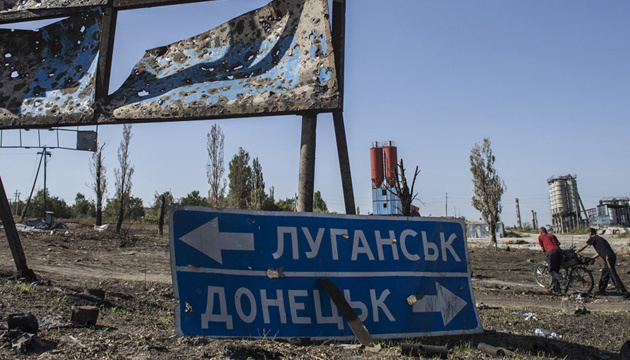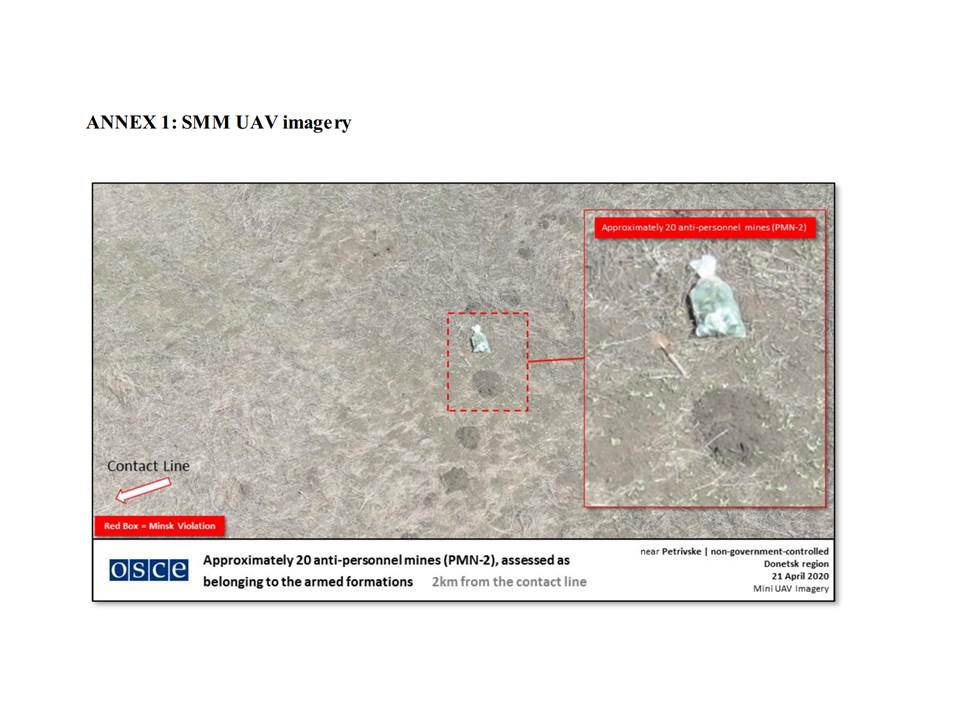
Ukraine at OSCE: Occupants plant anti-personnel mines near Petrivske
“In its weekly report for April 20-26 (and these reports are not published on the OSCE website), the SMM reported that it had observed "demining works" on a field east of the road between Petrivske and Styla in the occupied Donetsk region. However, the facts cited in the report indicate that it was the mining of the territory with anti-personnel mines," Deputy Permanent Representative of Ukraine to International Organizations in Vienna Ihor Lossovskyi said in an exclusive comment to an Ukrinform correspondent.
According to the diplomat, during the online meeting of the OSCE Forum for Security Co-operation on Wednesday, May 6, the Ukrainian delegation drew the attention of the participating states to the fact that the SMM had recorded the process of mining of the territory by the Russian occupation forces.

"The Mission's report stated that they saw, among other things, a transparent bag containing about 20 anti-personnel mines (PMN-2) on the field. OSCE SMM monitors indicated that they could not determine whether this was evidence of demining or, on the contrary, of planting landmines. During the meeting, we explained that there is no doubt: it was mining of the territory by the Russian armed forces," Lossovskyi said.
According to him, PMN-2 anti-personnel mines have an antirecovery device which means that the bag could not contain anti-personnel mines of that type allegedly neutralized in the field where demining works were allegedly carried out. At the same time, such landmines are rather safe before activation and can be safely transported even in a bag.
"PMN-2 anti-personnel mines are quite safe to activate and can be transported and carried relatively safely even in bags. However, according to Russian combat instructions, they are prohibited from being disposed of or moved after they have been placed on the ground in a combat position. They can be destroyed only by the charge of an explosive planted near a mine or by the repeated passage of tanks with mine-clearing attachment on a minefield," the Deputy Permanent Representative of Ukraine to International Organizations in Vienna explained.
The diplomat noted that PMN-2 anti-personnel mines are still in service with the Russian armed forces although their use is prohibited under the Convention on the Prohibition of the Use, Stockpiling, Production and Transfer of Anti-Personnel Mines and on their Destruction of 3 December 1997 (Ottawa Treaty).
Lossovskyi recalled that Ukraine signed the Convention in 1999 and ratified it in 2005. As part of the obligations, Ukraine destroyed all PMN-2 anti-personnel mines, which it had inherited after the collapse of the USSR, under international supervision by 2011. In turn, the Russian Federation refused to sign the Ottawa Treaty and continues to use PMN-2 and other anti-personnel mines during armed hostilities.
ol




